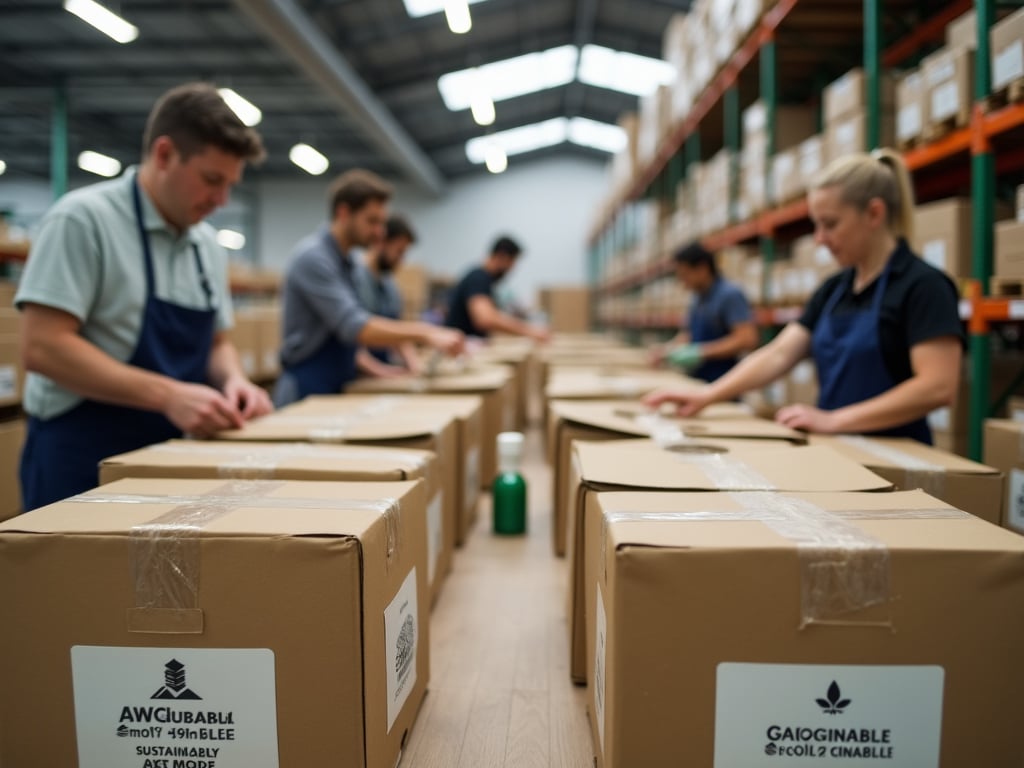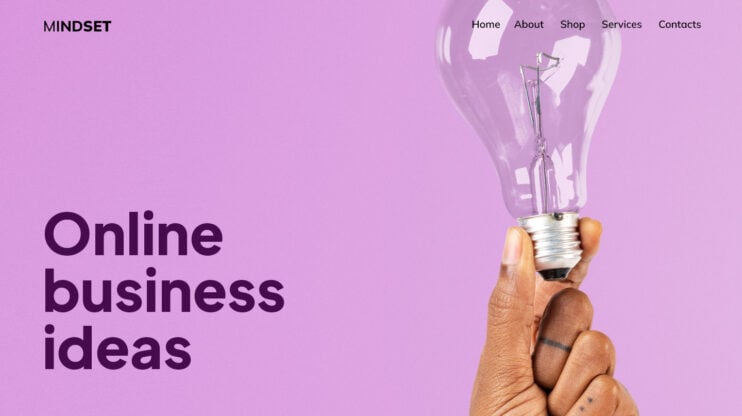Ecommerce trends continuously change the online shopping experience. So, staying ahead of emerging trends is essential for businesses aiming to thrive in 2025 and beyond.
New trends pop up all the time. In 2025, we’ll see some cool stuff happening in ecommerce.
Ecommerce trends like artificial intelligence (AI), augmented reality (AR), and new real-life connections like voice search will make online shopping smarter and more personal.
FAQ
What are the top ecommerce trends for 2024?
Top trends for 2024 include increased AI integration in customer experiences, growth in mobile shopping, and sustainability as a key business focus. Social commerce is expanding rapidly, enabling direct purchases on social media, while augmented reality enhances product visualization online.
How will ecommerce evolve in 2025?
Ecommerce in 2025 will see a rise in omnichannel retail, where online and offline experiences blend seamlessly. Generative AI will drive product optimization, and conversational AI will enhance customer interactions. Sustainable and eco-friendly practices will remain a priority.
What are five key trends in online shopping?
Online shopping trends include personalized AI-driven experiences, the growth of mobile and voice commerce, sustainability-focused products, integration of AR for immersive shopping, and the rise of social commerce through platforms like Instagram and TikTok.
Where can I find recent ecommerce trends?
Reliable sources for ecommerce trends include reports from McKinsey, Gartner, Shopify, and 10Web’s insights on using AI to enhance online businesses. These resources provide data-driven insights into consumer behavior and technology-driven changes in the market.
What insights does McKinsey provide on ecommerce?
McKinsey highlights the importance of personalization, the growing demand for sustainability, and the shift to omnichannel strategies. They also discuss the role of analytics in understanding customer preferences and optimizing digital experiences.
What does Gartner say about 2025 ecommerce?
Gartner emphasizes the adoption of AI for customer engagement, advancements in digital commerce platforms, and the importance of integrating AR/VR technologies to create immersive shopping experiences in 2025.
What are the latest B2B ecommerce developments?
B2B ecommerce focuses on AI-driven personalization, blockchain for secure transactions, and improved automation of sales processes. Businesses are adopting sustainable solutions to align with environmental goals and customer preferences.
What major changes are expected in online retail?
Online retail is shifting toward instant gratification through quick commerce (Q-commerce), enhanced AI shopping assistants, and 3D virtual stores that replicate physical shopping experiences online. Customization and faster deliveries are key focus areas.
What innovations are shaping the future of ecommerce?
Innovations like Web3 technologies, AI-powered search and recommendation engines, and sustainable packaging are transforming ecommerce. Immersive technologies such as AR and VR are also reshaping how consumers shop online.
Which ecommerce sectors are growing the fastest?
Fast-growing ecommerce sectors include health and wellness, sustainable fashion, and digital goods. Subscription services and niche markets like eco-friendly products or artisanal items are also expanding rapidly.

Create your online store in minutes!
Looking to sell online? Develop and launch your store with 10Web AI Ecommerce Website Builder.
Global ecommerce market outlook
The ecommerce market is growing fast around the world. In 2024, it’s expected to reach $8.77 trillion. By 2029, it could grow to $18.81 trillion. It’s easy to see why ecommerce trends represent an enormous profit potential—and why business owners are paying heed.
More people are shopping online using their phones and tablets. This is one of the biggest trends in ecommerce right now. It’s changing how companies sell things and how customers buy them.
Different types of products are sold online. Some popular categories are:
- Beauty and personal care
- Consumer electronics
- Fashion and clothing
- Food and drinks
The market includes businesses selling to consumers (B2C) and other businesses (B2B). B2C is what most people think of when they hear “online shopping.”
Some big companies have a large share of the ecommerce market. These are often well-known names that many people use for online shopping.
The growth of ecommerce is happening all over the world. Some areas are growing faster than others. This creates new chances for businesses to reach customers in different countries. As more people get internet access, the ecommerce market will likely keep growing.
Top ecommerce trends to watch in 2025
Ecommerce trends, driven by new technologies and changing shopping habits, will shape the future of this enormous market. New advances in marketing and ecommerce tools are changing how we interact with the online world through our computers, mobiles, and smart devices.
Emerging technologies in ecommerce
New tech has grown by leaps and bounds in the past few years. These tools make buying and selling easier, faster, and more fun for everyone.
Artificial intelligence and machine learning

AI and machine learning help online stores get smarter. They can guess what you might want to buy based on your past shopping. This means you’ll see products you’re more likely to like.
AI chatbots can answer your questions any time of day. They can help you find items or solve problems quickly. Some AI tools can even spot fake reviews or catch fraud before it happens.
Machine learning also helps with inventory. It can predict what items will sell out and when. This keeps popular products in stock and ready to ship.

Create your online store in minutes!
Looking to sell online? Develop and launch your store with 10Web AI Ecommerce Website Builder.
Augmented reality and virtual reality
AR and VR are making online shopping more like being in a real store. With AR, you can see how furniture would look in your home before you buy it. You can try on clothes or makeup without leaving your couch.
VR lets you walk through virtual stores or showrooms. You can pick up and examine products as if they were right in front of you. This is great for big purchases like cars or houses.
These tools help you feel more sure about what you’re buying. They cut down on returns and make shopping more fun.
Blockchain technology
Blockchain is best known for cryptocurrencies, but it has other uses in ecommerce. It can make payments safer and faster, especially across borders.
Blockchain can also track products from maker to buyer. This helps prove that luxury goods are real and shows where food comes from. It can spot fake items and stop them from being sold.
Some stores use blockchain to run loyalty programs. You can earn and spend points across different brands more easily.
Marketing automation
Marketing automation saves time and targets customers better. It can send emails when you leave items in your cart or when a product you like goes on sale.
These tools track how you interact with a store’s website and ads. They use this info to show you more relevant products and offers.
Automated systems can post on social media and update product listings. This keeps everything fresh without needing constant human work.
Headless ecommerce solutions
Headless ecommerce splits the front end (what you see) from the back end (how it works). This lets stores change how their site looks without affecting how it runs.
It’s easier to add new features or try out different designs. Stores can make sure their site works well on phones, computers, and even smart speakers.
Headless setups can handle lots of traffic during big sales. They also let stores sell through many channels, like apps and social media, all from one system.
Mobile commerce growth
Mobile shopping is taking over the ecommerce world. More people are using their phones to buy things online, and businesses are adapting to meet this demand.
In 2023, mobile commerce sales hit $2.2 trillion globally. This made up about 60% of all online sales. Experts think this number will keep growing. They predict mobile sales will reach $3.4 trillion by 2027.
In the US, mobile commerce is also booming. It’s expected to make up 44.6% of all retail sales in 2024. That’s almost half of all purchases!
Many shoppers prefer using their phones to buy things. It’s quick and easy. You can shop from anywhere at any time. This trend is likely to continue as more people get comfortable with mobile shopping.
Mobile payment innovations
New ways to pay on mobile are making shopping even easier. Digital wallets like Apple Pay and Google Pay are becoming more popular. These let you save your payment info securely on your phone.
Some stores now use QR codes for payments. You just scan the code with your phone to pay. It’s fast and doesn’t require touching anything.
Buy now, pay later options are also growing on mobile. These let you split big purchases into smaller payments over time. Many young shoppers like this choice.
We’ll likely see even more new payment methods as mobile shopping grows. These will make buying on your phone faster and simpler than ever before.
Ecommerce personalization strategies
Personalization helps online stores tailor shopping experiences to individual customers. It boosts sales and keeps shoppers coming back. Let’s look at some key ways to personalize your ecommerce site.
Personalized shopping experiences
When customers visit your online store, make them feel special. Use their name in greetings and emails. Show products based on their past purchases and browsing history. Change your homepage to highlight items they might like.
You can also personalize search results. Put products a customer is more likely to buy at the top. Use their location to show relevant items, like winter coats for cold areas.
Create quizzes to learn customer preferences. Ask about style, budget, and needs. Then, show products that match their answers. This makes shopping easier and more fun.
Customized product recommendations
Suggest items your customers will love. Use data on what they’ve bought before. Look at products they’ve clicked on or added to their cart. Show similar items or things that go well together.
Place recommendations in key spots:
- On product pages
- In the shopping cart
- In follow-up emails
Mix in trending items with personal picks. This keeps suggestions fresh and introduces new products. Use clear labels like “You might also like” or “Customers also bought.”
Test different types of recommendations. See which ones lead to more sales. Keep improving your system to make better suggestions over time.
Subscriptions
Offer subscription services for products customers buy often. This could be anything from pet food to razors to coffee. Make it easy to set up and manage subscriptions.
Let customers choose how often they want deliveries. Give them control to pause, skip, or change orders. Send reminders before each shipment. This builds trust and prevents surprises.
Create special perks for subscribers. You could offer discounts, free shipping, or early access to new products. This makes people more likely to sign up and stick with your service.
Use subscription data to further personalize the shopping experience. Suggest add-ons or upgrades based on their regular orders. This increases sales and customer satisfaction.
Sustainable and ethical ecommerce

Eco-friendly practices are changing how online stores do business. You’ll see more companies using green packaging and cutting down on waste. Many are switching to recyclable materials for boxes and padding.
Some shops now offer carbon-neutral shipping. This means they balance out the pollution from delivery trucks. They might plant trees or support clean energy projects to do this.
Ethical sourcing is becoming a big deal, too. Stores are taking a closer look at where their products come from. They want to make sure workers are treated fairly and paid well.
You can expect more transparency from online sellers. They’re starting to share details about their supply chains. This helps you know precisely how your stuff is made and shipped.
Tech is playing a role in making ecommerce greener. AI helps predict demand, which cuts down on overstock. Blockchain lets companies track products from start to finish.
As a shopper, you’ll see more eco-friendly options. Look for labels like “sustainably made” or “ethically sourced” when you browse. Some sites now have filters to show only green products.
Social media influence on ecommerce
Social media shapes how people shop online. It connects brands with customers and creates new ways to sell products directly on platforms.
Social media platforms now let businesses sell products right in their posts and stories. Instagram and Facebook have shopping features that let you buy without leaving the app. TikTok is testing ways for users to shop while watching videos.
Pinterest has buyable pins that link straight to product pages. These tools make it easy to go from seeing something you like to buying it fast.
More people are using social media to find new products too. They trust recommendations from friends and influencers they follow.
Influencer partnerships
Brands team up with social media stars to reach more shoppers. These influencers share products with their followers through posts, videos, and live streams.
Some influencers create their own product lines to sell on social media. This helps brands connect with specific groups of customers.
Video content is huge for influencer marketing. Short videos on TikTok and Instagram Reels can show products in action. Live shopping events let influencers answer questions and demo items in real time.
User-generated content also boosts sales. When regular people post about products they like, it feels more natural to other shoppers.
Omnichannel shopping experience
Shoppers today want a smooth experience across different channels. This means you can start looking at products on your phone and then go to a store to try them out. You might finish your purchase later on a computer at home. Brands are working to make this happen seamlessly.
In-store tech is getting better. Some stores use digital displays that change based on what you like. Others have apps that help you find items or see more info as you shop. These tools make physical stores more interactive and fun.
Online shopping is also changing. Websites now remember what you’ve looked at before. They show you items you might want based on your history. This makes finding what you need easier and faster.
AR and VR are becoming more common, too. You can use your phone to see how furniture would look in your home. Or you might try on clothes virtually before buying. This helps you make better choices without leaving your house.
Delivery options are expanding. You can often buy online and pick it up in-store. Some places even offer same-day home delivery. This gives you more ways to get what you want when you want it.
Cross-border ecommerce expansion
Cross-border ecommerce is growing fast. By 2026, it may reach $2.2 trillion globally. This means more people are buying from other countries online.
You can tap into new markets by selling across borders. This lets you reach more customers and boost sales. But it also brings new challenges.
Different countries have their own rules for selling online. You must learn about taxes, customs, and shipping in each place. It’s important to follow local laws.
Payment methods vary, too. While some countries prefer digital payments, others still use cash. You should offer options that work for your target markets.
Language can be a barrier. Having your website in multiple languages helps. Good customer service is also available in those languages.
Shipping costs and times are key factors. Customers want fast, cheap delivery. You may need to work with local partners to meet these needs.
Mobile shopping is big in many countries. Make sure your site works well on phones and tablets.
Customer experience and retention tactics
Online stores are focusing more on keeping customers happy and coming back. This means better service, rewards programs, flexible payment options, and faster shipping.
Customer service innovations
Chatbots and AI assistants are helping stores talk to shoppers 24/7. These tools can quickly answer questions, suggest products, and solve simple problems. Some stores now use video chat to give personalized help to real people. This lets customers see products up close or get expert advice.
Stores are also using data to understand what each customer likes. This helps them give better service and recommend the right products. Some stores even use augmented reality to let you “try on” clothes or see how furniture would look in your home before buying.
Loyalty programs and engagement
Many stores now have apps that give points for purchases. You can use these points to get discounts or free items. Some apps also let you play games or take quizzes to earn more points. This makes shopping more fun and gives you reasons to keep coming back.
Stores are also using social media to connect with customers. They might share behind-the-scenes videos, ask for feedback on new products, or run contests. Some brands have special groups where loyal customers can chat and share tips.
Buy now, pay later payment options
More stores are offering ways to spread out payments for big purchases. This lets you buy things now and pay for them over time, often without interest. Popular options include Afterpay, Klarna, and Affirm.
These services usually check your credit quickly and don’t need a hard credit check. This makes buying things they want or need easier for more people. Some stores even offer their own payment plans for big-ticket items like furniture or electronics.
Fast shipping and delivery
Free and fast shipping is becoming standard for many online stores. Some offer same-day or next-day delivery in certain areas. This helps them compete with local stores for speed and convenience.
Stores are also finding new ways to get items to you. Some use local stores as pickup points. Others partner with services like Instacart for grocery delivery. A few are even testing drone delivery for small items in some areas.
Many stores now let you track your package in real time through their app or website. This gives you a better idea of when your items will arrive and helps reduce worries about lost packages.
Ecommerce data security and privacy
Online stores need to protect customer data and follow privacy laws. This keeps shoppers safe and builds trust.
Data protection regulations
New data privacy laws affect how online stores handle customer info. The GDPR in Europe sets rules for collecting and using personal data. It gives people more control over their information.
In the US, laws like CCPA in California protect consumer privacy rights. These laws require stores to be clear about data collection and let customers opt out of data sharing.
Stores need to update their privacy policies and get consent before collecting data. They also have to let customers see and delete their data if asked.
Cybersecurity measures
Online stores use different tools to keep customer data safe from hackers. Strong encryption protects payment info and passwords. Two-factor authentication adds an extra layer of security for accounts.
Regular security audits help find weak spots before hackers do. Stores also train staff on data security best practices.
Backing up data regularly protects against ransomware attacks. Having a plan to respond to breaches quickly is important, too.
New AI tools are helping detect fraud and unusual account activity faster. This stops attackers before they can do much damage.
AI-powered ecommerce sites
Ecommerce businesses can leverage the AI-powered ecommerce features of 10Web to harness the growing trend of AI in online shopping. 10Web’s advanced AI tools enable businesses to create and manage their ecommerce presence efficiently while enhancing personalization, customer engagement, and operational efficiency.
Here’s how users can make the most of this trend:
- AI-powered website creation:
- Start for free: Sign up for 10Web and begin by describing your business and ecommerce goals.
- Generate your website: Use the AI Website Builder 2.0 to create a unique ecommerce site. The AI generates outlines, designs sections, and customizes colors and fonts based on your choices.
- Customizable layouts: Utilize over 60 pre-designed templates or free-form AI generation to create tailored sections like product pages, checkout processes, and landing pages.
- Seamless WooCommerce integration:
- Powerful backend: The WooCommerce backend enables users to manage their store efficiently, from products and inventory to payment processing and shipping.
- Product management: Add, edit, or delete products with ease while using customer analytics to inform decisions.
- Personalized shopping experiences:
- Dynamic content recommendations: Use insights to showcase relevant products to each customer, increasing engagement and conversions.
- Chatbots and assistance: Integrate AI chatbots to guide users, answer questions, and provide personalized shopping advice.
- Performance optimization:
- 10Web Booster: Improve site speed and performance with advanced caching, image optimization, and Google Cloud hosting.
- SEO-friendly structure: Ensure high search rankings with SEO tools and fast-loading pages.
- Scalability and security:
- Reliable hosting: Built on Google Cloud, 10Web ensures uptime and scalability as your ecommerce business grows.
- SSL certificates: Generate free SSL certificates for a secure shopping experience.
Using 10Web’s AI-powered tools allows businesses to stay competitive in the fast-paced ecommerce landscape, meeting customer expectations for personalization, speed, and ease of use. The AI capabilities of 10Web reduce manual effort, optimize store management, and elevate the shopping experience—all while being accessible even for those with minimal technical expertise.

Create your online store in minutes!
Looking to sell online? Develop and launch your store with 10Web AI Ecommerce Website Builder.
The right ecommerce trend at the right time
Picking the best ecommerce trends for your business can be tricky. Not every trend will fit your brand or customers. To figure out what works, you need to do your homework.
Keep an eye on industry news. Read trade publications and follow thought leaders on social media. This helps you spot emerging trends early.
Watch what your competitors are doing. If they’re trying something new, it might also be worth exploring for your business. But don’t just copy – think about how you can do it better.
Use data to guide your choices. Look at your sales numbers, website traffic, and customer feedback. This info can show you which trends your shoppers might like.
Test new ideas on a small scale first. Try out a trend with a limited product line or for a short time. See how customers react before going all-in.
Ask your customers what they want. Surveys and social media polls can give you direct feedback on new ideas.
Stay true to your brand. Even if a trend is hot, it must fit your company’s values and image.
Remember, timing is key. Some trends might be perfect for your busy season but flop during slower months. Plan your rollouts carefully.
Predictions for future ecommerce trends
Ecommerce will keep growing fast in the next few years. More people will shop online instead of going to stores.
You’ll see new ways to buy things using your phone or computer.
AI will make shopping easier. It will help you find what you want faster. You’ll get better suggestions for products you might like.
Chatbots will improve their ability to answer your questions quickly at any time of the day or night.
Social media and shopping will mix more. You’ll be able to buy products or services from posts on Instagram or TikTok. This will make it simple to get things you see online.
Virtual reality will change how you shop. You might try on clothes or see furniture in your home before buying. This will help you make better choices.
Delivery will get faster. Some things might may already come to you the same day you order them. Drones could make the process even faster, producing less traffic and environmental stress.
Eco-friendly shopping will be big. You’ll see more products that are good for the planet. Companies will use less packaging and greener shipping methods.
Privacy is already an increasingly important issue. Stores will work hard to find new ways to keep your info safe. You’ll also have more control over what data you share when you shop online. Although some regions have seen more progress than others, laws and regulations are slowly starting to recover lost ground in these critical areas of consumer protection.
Conclusion
The ecommerce landscape continues to evolve rapidly, with trends like artificial intelligence, augmented reality, voice search, and sustainability reshaping how businesses and consumers interact online. These innovations enhance convenience and create more engaging, personalized, and eco-friendly shopping experiences.
By staying ahead of these ecommerce trends, businesses can seize opportunities to thrive in a competitive digital marketplace. At the same time, shoppers benefit from more intelligent, faster, and more enjoyable online retail experiences. The future of ecommerce is here—embrace it to stay relevant and successful in 2025 and beyond.

Create your online store in minutes!
Looking to sell online? Develop and launch your store with 10Web AI Ecommerce Website Builder.











